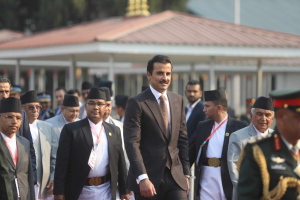As migratory birds start moving at this time of winter, Nepal has begun the census of waterbirds Saturday onwards.
The Department of National Parks and Wildlife Conservation, Bird Conservation Association Nepal, organisations working for the conservation of Himalayan environment, birds and biodiversity with the coordination of Wetlands International have begun collecting details and status of endemic as well as migratory birds in Nepali wetlands.
According to national coordinator of the census, Dr Hem Sagar Baral, the census is being conducted on a voluntary basis and is aimed at raising awareness on conservation through the participation of the local communities and stakeholder bodies.
More than 300 volunteers, including environmentalists, will conduct the census of waterbirds till January 18.
Birds that breed, live, feed and roam around and spend most of their time in the wetlands and surrounding areas are called waterbirds. Nepal has more than 100 species of waterbirds and most of them are migratory birds.
The census is being conducted in more than 60 wetlands, lakes, ponds and rivers throughout the country. Dr Baral informed that the census began from the Koshi Tappu Wildlife Reserve in the east and the Shuklaphanta National Park on the far-west.
The census of waterbirds is taking place throughout the world under the leadership of Wetlands International. The number and species of waterbirds indicate the quality of habitats; thus, they are the key indicators of wetlands health.
Wetlands provide feeding, resting, and foraging habitat for millions of wetlands dependent birds. Determining the quality and identification of wetlands of high importance is crucial for the development of conservation strategies.
According to Himalayan Nature, the first internationally coordinated waterbird count was organised in January 1967. Now in its 54th year, the International Waterbird Census has become a vital source of information for the conservation and management of wetlands and waterbirds around the world.



